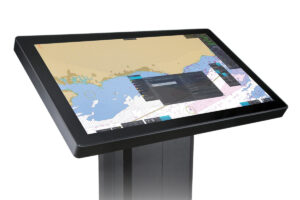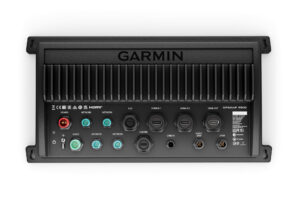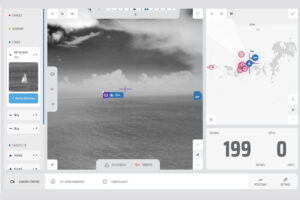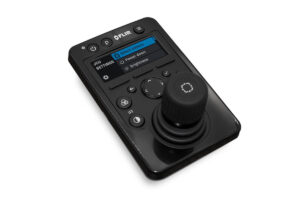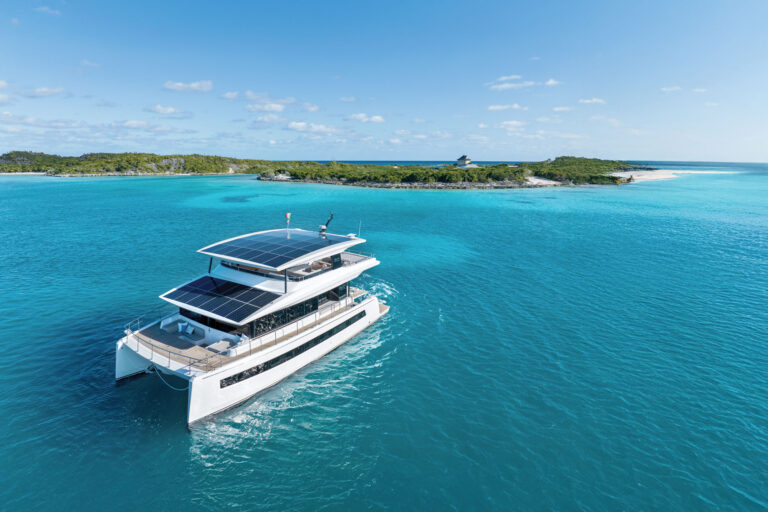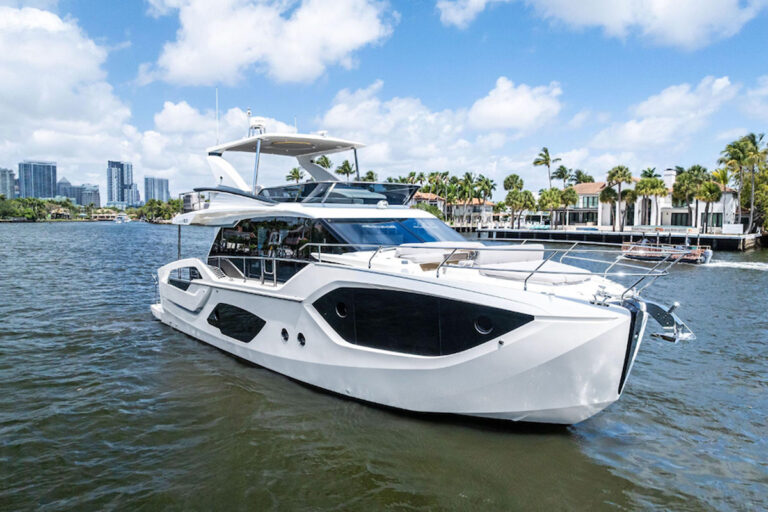
Imagery of blue sky, lush vegetation and the sunshine State’s warm waters streamed down from a hovering drone’s camera as we circled the waters off Virginia Key aboard Raymarine’s Boston Whaler 350 Outrage. The drone’s operator swung the camera’s perspective, and our boat came into view. He was controlling the drone directly from our vessel’s 12-inch Raymarine Axiom Pro multifunction display — not from the drone manufacturer’s remote control — and the live footage was playing in real time on the MFD’s split-screen display.
Giuseppe Carnevali would have been impressed. When Carnevali, the founder and former CEO of Navionics, unveiled the world’s first chart plotter in 1984, his goal was safe, reliable navigation, not third-party interoperability. But now, almost a quarter century later, the technology has evolved tremendously. Raymarine released its Axiom MFDs last year and spec’d them with lightning-fast processors and vast memory, allowing engineers to continue developing and releasing software and applications — which now include the ability to control drones.
“We wanted unsurpassed speed and performance and as long a life as possible, so we built plenty of overhead into Axiom,” says Jim McGowan, Raymarine’s Americas marketing manager. “We also wanted to eliminate black boxes, [so we] built these capabilities into the [MFD] sonar in particular.”
Raymarine’s original Axiom MFDs have quad-core Android processors and are available in 7- (from $649), 9- (from $949) and 12-inch (from $2,449) models. Axiom Pro MFDs come with 9– (from $2,299), 12- (from $3,399) and 16-inch (from $5,399) displays.
All Axiom and Axiom Pro models have Raymarine’s Lighthouse 3 operating system, which is based on the Android OS. Raymarine has released six Lighthouse 3 updates — free of charge — that have increased Axiom’s operating capabilities.
“Our initial challenge was to bring Lighthouse 2 features into Lighthouse 3,” McGowan says. Then Raymarine’s developers began creating new features including GPS Trail, enabling GPS data to be integrated with sonar information to render under-keel imagery.
Axiom’s quad-core chip sets and Android-based operating system facilitated much of this development.
“The nice thing about building on this is that there are a lot of features built in, including a video co-processer, Bluetooth, Wi-Fi, HDMI over wireless [which lets Axiom wirelessly stream to connected TVs] and ready support for high-level Ethernet,” McGowan says.
Lighthouse 3’s Android-based architecture also allows for partnerships with third-party app developers. They create Web-based interfaces that let Axiom users control compatible gear. Some examples include Theyr’s GRIB global weather and tide app, Seakeeper’s gyrostabilizer control app, and Mazu by SkyMate’s mSeries control app.
“Mazu uses an HTML 5 interface,” McGowan says. “We didn’t do the development — it was native to Mazu. We just opened the gate after vetting the app to ensure it wouldn’t put the boat on the rocks.”
Axiom MFD users can also download entertainment apps, including Netflix and Spotify, which can run in the background during navigation.
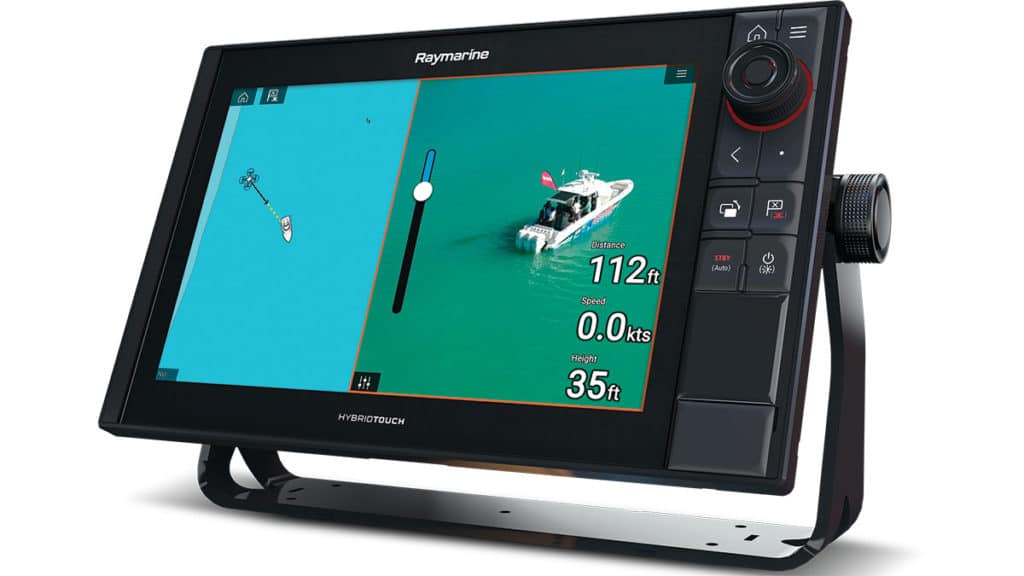
“Netflix and Spotify are standards,” McGowan says, hinting that other streamable media, including Pandora, could make an appearance on the Axiom platform in the near future. “The MFD just needs connectivity over the internet, so you either need a Wi-Fi hotspot or a smartphone or satellite-communication equipment, and the MFD streams your content from there. Axiom reaches out and behaves the same as [your computer] at home: You just log into your account, and the Axiom streams content in real time, using bandwidth.”
Lighthouse 3.6 is the version that allows Axiom owners to control compatible drones (currently DJI Mavic Series models). A user hard-wires his DJI controller to the Axiom via a USB cable to establish two-way, wireless communication between the MFD and the drone.
“Axiom’s Android platform makes this easy,” McGowan says. “We realized we could bring some automation into the process, which lets Axiom take workload off the pilot.”
While most drones can automatically return home, that process is manual aboard yachts, because the location of home is dynamic.
“The Axiom constantly sends its location information to the drone, which does the same,” McGowan says. The Axiom automatically plots the drone’s location on-screen and presents its critical navigation data (altitude, speed and distance) while displaying its camera feed.
While controlling a drone from your MFD may seem like frivolous fun, it also has practical applications, say, if the drone is flying 60 feet above sea level.
“It gives you a line of sight that’s way better than the upper deck,” McGowan says, adding that this is a good position to reconnoiter approaches through sandbars, reefs or coral heads. “You can also scope for fish using the camera’s polarizer.”
While Axiom’s Android-based platform enables third-party apps, McGowan says, Raymarine always has the MFD’s core purpose in mind.
“Axiom is primarily a navigation tool,” he says. “We can’t let people play Angry Birds just because it’s an Android system.”
Still, future possibilities include remotely controlling Web-enabled devices (say, home-security cameras).
“There’s a lot of digital switching that we might be able to do with HTML 5,” he says.
This level of interoperability is changing marine electronics — and yachting. Which, of course, was exactly what Carnevali intended in (drumroll please) 1984, even if he was thinking about data-rich screens instead of aerial camera feeds.
Should You Go Pro?
All Axiom multifunction displays have quad-core processors and sizable memory, but the Pro models thrive offshore thanks to a hybrid touchscreen/hard-key interface (standard) and 1 kW chirp and RealVision 3D sonars (optional). Axiom Pro displays also have In-Plane Switching to enhance readability in sunlight and from angles.
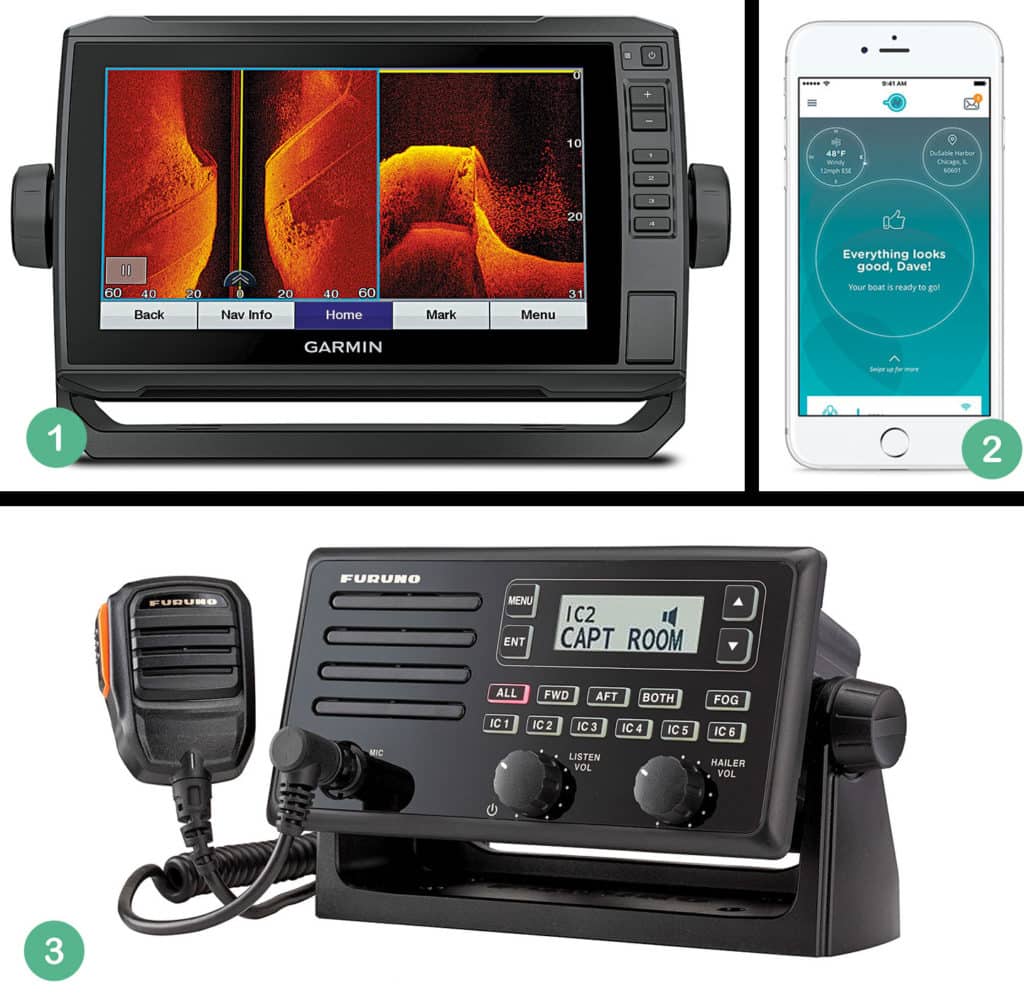
New Electronics
1) Lower sonar frequencies let anglers stalk fish at greater depths, whereas higher-frequency systems deliver greater detail at the expense of range. Garmin‘s Ultra High-Definition GCV 20 ($599) is a black-box sonar module compatible with GPSMap and EchoMap Plus multifunction displays. It broadcasts on frequencies from 0.8 to 1.2 MHz, delivering photolike imagery of depths to 200 feet. The GCV 20 can provide views below (ClearVü) and around (SideVü) the boat.
2) Nautic-On‘s remote vessel-monitoring system is designed to help ensure peace of mind, irrespective of an owner’s location. The system ($600 to $1,470) can be ordered in a variety of configurations that range from a single battery sensor to five battery sensors and three bilge-pump sensors. Additionally, users can use the system to check a vessel’s engine’s status, get weather information, and employ GPS tracking and geofencing.
3) Furuno‘s LH-5000 loudhailer is designed to make the yachtsman’s voice heard. It has an intercom system that’s separate from its loudhailing capabilities, and it can be networked with six 30-watt horn speakers. Additionally, the system comes programmed with eight internationally recognized warning signals, and its Listen Back feature lets users pick up and amplify voices and conversations from the dock, the deck or nearby vessels.

